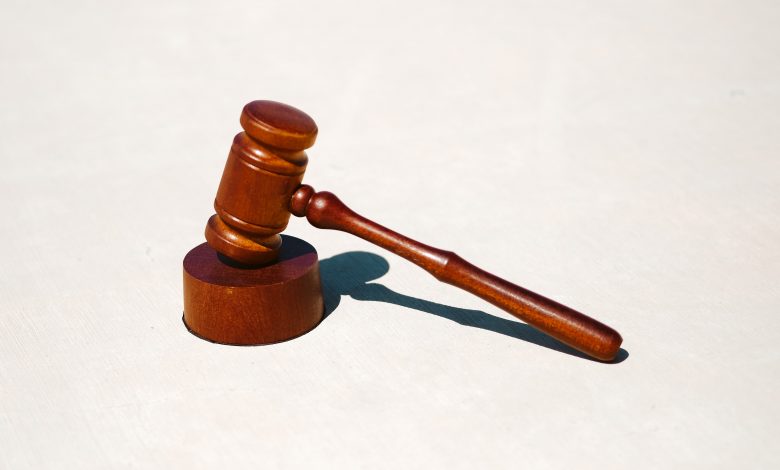What Is a Wobbler?

Not every case fits into a description of a crime perfectly, and unique situations can’t always be treated with a one-size-fits-all penalty. It’s quite possible for two people to be guilty of the same crime but for one to do considerably more harm the other. There may be aggravating circumstances, a troubling criminal history, or any other number of factors that could influence the severity of a crime and its corresponding punishment. Wobblers address this issue in the criminal justice system.
What Is a Wobbler Crime?
Many crimes have a predetermined charge of either a misdemeanor or a felony – and sometimes a certain case or degree within those charges – that won’t change. The judge may have flexibility in the prison sentence and other penalties they can provide, but for the most part, the circumstances of the crime don’t affect whether the crime is charged as a felony or misdemeanor. However, some crimes are affected by these circumstances. A wobbler is a crime that can be charged as either a misdemeanor or felony, as per the prosecution, although the judge gets final say on the classification. Laws may vary by state but some charges that are normally wobbler crimes include:
- Vehicular manslaughter
- DUIs
- Burglary
- Assault
- Sexual battery
- Fraud
- Forgery
- Stalking
- Sexual acts with a minor
- Spousal battery
- Hate crimes
- Vandalism
Misdemeanor vs. Felony Charges
The biggest difference between misdemeanors and felonies is the terms of incarceration: While misdemeanors usually come with less than a year in jail, most felonies come with over a year in prison. Additionally, the fines will be smaller with misdemeanors, and permanent loss of rights – such as the right to vote, own a gun, and other rights revoked with a felony conviction – don’t apply. Some of these rights include the right to vote, to own a gun, have parental custody, and to work in certain fields of employment. Many charged with felonies find it difficult to find a job with a felony on their record, as well as obtain housing, maintain familial relationships, or deal with various stigmas. Crimes that tend to be more violent in nature often won’t be wobbler crimes, but rather will always be charged as a felony. The more serious the crime, the more likely it is to be a felony.

What Determines a Wobbler’s Charge?
Mitigating and aggravating circumstances are the technical terms for these factors of the crime that prosecution or a judge may consider when determining if a wobbler will be charged as a misdemeanor or a felony. Mitigating circumstances are the factors used to argue for a crime to have a lesser charge. These can be points regarding the defendant’s character or specific points about the way the crime was carried out that may indicate it wasn’t as malicious as other more severe crimes. Some of these may be built into the law and its sentencing measures itself, but others may be more up to the decision of the court. It’s important to note that these circumstances don’t necessarily mean the charges will be dropped or even that they will definitely reduce a sentence. These are just aspects that the prosecution and judge often consider when deliberating a case. While these can be any number of points, some of these circumstances may be:
- Lack of criminal record: If this is someone’s first crime, they are much more likely to receive a lesser sentence than someone who is more of a habitual offender. Laws with sentencing guidelines will often note different penalties for first, second, third, or more time offenders.
- No harm caused: If the crime didn’t cause any physical injuries, it’s much more possible for a crime to be taken down to a misdemeanor. This may also involve proving that there was not an intent to cause harm, if harm did occur.
- Small role in crime: When crimes involve more than one defendant, it can be argued that one didn’t play a large role in carrying out the crime or perhaps that the part of the crime they are responsible for wasn’t as severe as the larger, overall crime committed.
- Necessity: It may be the case that the defendant acted of out of necessity for basic life needs or in an attempt to save their and other’s lives.
- Mental incapacitation: If the defendant wasn’t in their sound mind or they have a mental illness, the argument could be made that their decision making process or knowledge of wrongdoing was impaired because of it.
- Remorse: It seems simple, but the defendant just recognizing that they broke the law and wanting to do better may be enough for a charge to be lessened. Especially when sentencing, many judges are looking to determine what is the best way to obtain justice for the crime committed, while also penalize the defendant in the way that will be most beneficial to the defendant themselves. Because of this, showing genuine remorse may convince a judge the defendant doesn’t need the harsher sentencing to get the point and back on track.
- Character and history: Some attorneys may choose to highlight their client’s hardships that may have led them to breaking the law. This may include showing necessity, as well as the way a past abuse or such may have led the defendant down this path. They could also address the positive impact the defendant has had on the community and what they can contribute if given a lesser sentence.
- Victim’s culpability: This is making the argument that the victim is in some way to blame in this case. That’s likely to mean that the victim was actually a willing participant in whatever allegedly occurred or that the victim in some way prompted the crime.
- Age: If a defendant is particularly young, the sentence may be a little lighter to avoid giving a younger person such a harsh sentence. This is especially true in some statutory rape cases, as certain age differences between the defendant and minor can either eliminate, lower, or increase charges.
Alternatively, an aggravating circumstance is an aspect of the crime committed that would cause the prosecution or judge to consider the charge with more severity. This can bring a crime up to a felony charge or cause the defendant to have a harsher sentence. Some of these factors are:
- Criminal record: Again, the defendant’s criminal history will affect the decision, and someone with a longer history of convictions is probably going to have elevated charges.
- Serious injury: If there was a severe injury, emotional distress, or the loss of life involved in the crime, it’s probably going to be a felony. The more violent the crime, the more likely it is to be a felony conviction with harsher penalties.
- Weapon: If the crime was committed with a weapon, it may increase the charges. Weapon can be a pretty loose term here as well, so nearly anything can be considered use of a deadly weapon if enough force is used.
- Relationship with victim: The victim will also likely be considered, as if the defendant is in a position of guardianship, leadership, or authority that would cause the victim to be vulnerable to them, it can be an aggravating circumstance. This may also include just if the victim was a child, elderly, disabled, or others with particular vulnerabilities.
- Recklessness: If it can be proven that the defendant was acting in complete disregard for the safety of others and harmed someone in the process, this may result in a higher charge.
- Large role in crime: It’s to be expected that the leader of a larger scheme will likely walk away with a higher charge. If the defendant was crucial to the plan or played a large part, it may affect their sentencing.
Other factors that may be considered when deciding if a charge should be a felony or misdemeanor include:
- How strong of a case the prosecution made
- What penalties are required or limited to for each classification
- If the defendant cooperated with law enforcement
- How likely the defendant is to commit a crime again
- The defendant’s employment and family life

Examples of Wobbler Crimes
Not all states have wobbler crimes, and the crimes may vary. So to look at some examples, California’s extensive list of wobblers is a good place to turn. Following is an overview of several crimes that are considered wobbler crimes in California and how the charge is determined there.
Sexual Battery
California’s sexual battery law is a wobbler crime covered by California Penal Code Section 243.4, which gives several scenarios for cases of sexual assault. It involves sexual assault in the cases that:
- The defendant touched the victim against their will
- The defendant intimately touched the victim who was unlawfully restrained against their will
- The defendant intimately touched the victim who was in an institution for medical treatment, seriously disabled, or medically incapacitated against their will
- The defendant forced the victim to intimately touch themselves, the defendant, or a third party in one of the two above cases
- The defendant intimately touched someone under the untrue pretense that they were doing so in a professional manner
The first case results in a misdemeanor sexual battery charge, which comes with up to six months in jail, a possible $2,000 fine, or both. However, it does provide some aggravating circumstances. For one, if the defendant is the victim’s employer, the charge is still a misdemeanor, but the fine can reach $3,000.
The following four all have the same punishment, which can range from a misdemeanor to a felony. The misdemeanor is punishable by up to a year in jail and possibly a fine of up to $2,000. The felony would be prison for two to four years and a fine of up to $10,000. Additionally, it notes that, if any of these acts are carried out on a minor and the defendant already has been convicted for one of the crimes in this section before, it will be a felony charge, not a misdemeanor.
Driving Under the Influence and Vehicular Manslaughter
In California, driving a blood alcohol concentration (BAC) of 0.08 percent or above can result in a DUI. The mitigating and aggravating factors, however, will decide if it’s a misdemeanor or a felony.
A DUI charge, without aggravating factors, is a misdemeanor punishable by a combination of a $390-$1,000 fine, up to a year in jail, license suspension, and/or probation. For consecutive DUI charges, it’s still a misdemeanor, although it’s likely that the charges will be a bit more severe than the prior convictions.
Aggravating circumstances can make that misdemeanor charge a felony though. The first, most obvious is if anyone is injured or killed as a result of the DUI, which could result in charges of negligent vehicular manslaughter while intoxicated, gross vehicular manslaughter while intoxicated, or second-degree murder. On the high end, these charges could be up to 15 years in prison, severe fines, loss of license, and other penalties. An injury DUI charged as a felony can come with 14 months to four years in prison and a fine up to $5,000. Multiple victims can add an additional year in prison for each victim – up to three. Going an excessive speed, having a BAC of above .15 percent, and having a minor in the car are other ways to show reckless disregard for human life, which can result in a felony conviction. When a minor is in the vehicle, there is a mandatory jail time of 48 hours for the first offense, 10 for the second, and 30 for the third. It’s also likely that the prosecution and judge will consider whether the defendant refused BAC testing for the DUI.

Reducing a Felony Charge to a Misdemeanor
There are several ways that one could argue that a wobbler crime should be reduced from a felony charge to a misdemeanor. The first would be to address any of the mitigating circumstances described earlier, as these may be enough to turn a felony into a lesser charge.
Cooperating with law enforcement in their investigation, especially when the defendant’s help is needed to solve a crime or bring down a whole crime ring, can drop a charge to a misdemeanor. This is often in the form of a plea bargain, where the defendant pleads guilty and promises to tell everything they know in return for a lesser sentence. However, it is important to discuss a plea bargain with an attorney before making any decisions to ensure that this is the best option.
If the defendant’s rights were violated in some way during the course of the arrest, investigation, or trial, it may be possible to get reduced charges. For example, if the defendant is not read their Miranda Rights upon their arrest, it is possible evidence may be thrown out that was collected when interviewed against their Fifth Amendment rights. Additionally, a violation of the Fourth Amendment where an officer searches without a warrant and finds evidence may also have the evidence considered unlawful. This lack of proof can be enough to have the charges dropped completely or reduced to a misdemeanor.
While these are all options before the conviction is made, there is still hope after receiving a felony conviction; it’s possible to appeal a decision and attempt to have it lowered to a misdemeanor after the fact. Many individuals opt to this when possible, especially when new evidence comes to light or they believe their case was sentenced incorrectly. For many, the loss of rights as a felony causes a large burden on their lives, and a charge reduction could allow them to advance farther in life.
If you believe any of these factors may be applicable to your case, be sure to talk to your attorney about the laws for your specific state. They can help you determine what may be working against you and what you can focus on to bolster your defense and convince the prosecution and judge that a lesser sentence – or hopefully the charges being dropped – is sufficient for your case.

Tipping the Balance
For many wobbler crimes, the circumstances regarding the crime and the defendant themselves will bear heavy weight on the verdict. When crimes can range widely in severity, the punishments must range similarly. These laws ensure that the law can pursue justice to the furthest extent or see mercy and lessen charges based on mitigating circumstances. However, enough aggravating circumstances, or even just one really bad one, can be enough the tip the scale from a misdemeanor to a felony. It’s essential to discuss with your lawyer what defenses you have and options you can consider.



